Publications
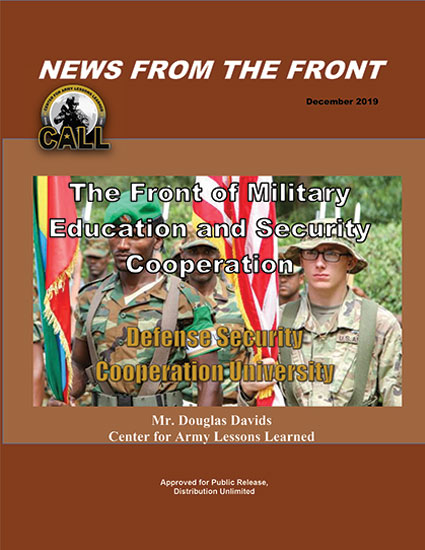 NFTF - The Front of Military Education and Security Cooperation
NFTF - The Front of Military Education and Security Cooperation
Security cooperation is a multifaceted effort that requires more than just planning to develop the skills of a foreign security force. In 2017, the National Defense Authorization Act created the DOD Security Cooperation Workforce Development Program (SCWDP) to develop and manage supporting security programs, improve the quality of the security cooperation workforce, and ensure personnel have the appropriate level of expertise and experience to perform their missions. The 2017 NDAA also directed the Defense Security Cooperation Agency (DSCA) to manage the SCWDP’s training and education standards, as well as identify and define training and certification requirements. Specifically, DSCA was required to “establish and maintain a school to train, educate, and certify the security cooperation workforce … .” To meet this obligation, DSCA established the Defense Security Cooperation University (DSCU) in September 2019, to educate and certify 20,000 U.S. government employees’ security cooperation and standardize their training. This article provides a brief description of the threat environment security cooperation must work within, an overview of the new DSCU, a discussion of the legal requirements emplaced on the DSCU, and an example course from DSCU.
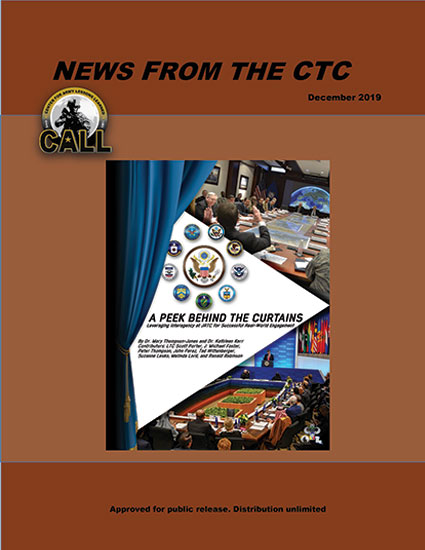 NFTCTC - A Peek Behind the Curtain: Leveraging Interagency at JRTC for Real-World Engagement
NFTCTC - A Peek Behind the Curtain: Leveraging Interagency at JRTC for Real-World Engagement
The purpose of this article is to facilitate effective engagement between unified action partners (UAPs) and the centerpiece of the Army's formation, the brigade combat team (BCT). It provides valuable insights from interagency (IA) and international organization experts who have supported dozens of training rotations at the Joint Readiness Training Center. The goal is to help BCT leaders and units better navigate and leverage UAP, particularly IA, in the operational environment.
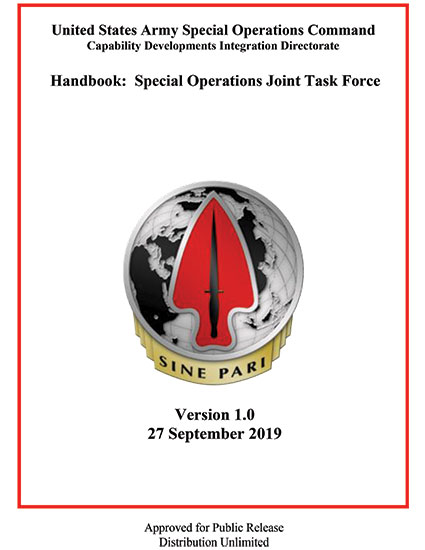 Special Operations Joint Task Force Handbook
Special Operations Joint Task Force Handbook
This handbook consists of two parts for use by two distinct audiences. Section one, the SOJTF Employment Guide is an ?up and out? strategic communication for use by senior leaders and staff members who will find it useful when incorporating a SOJTF into campaign plans and contingency operations that involve large scale combat. Section two is a ?down and in? document aimed at SOJTF commanders and their staffs who can use the information as a checklist for developing SOJTF plans and policies when supporting the Joint Force in large scale combat at the operational level of war.
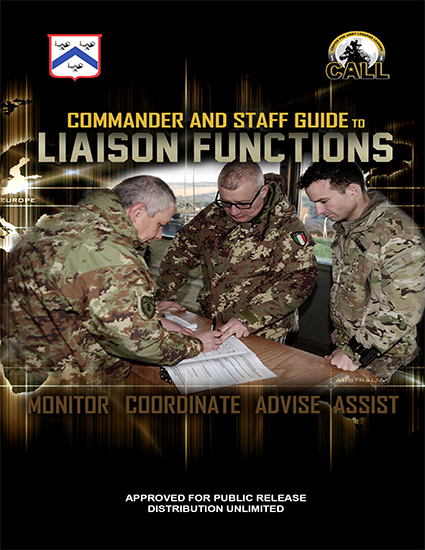 20-05 - Commander and Staff Guide to Liaison Functions
20-05 - Commander and Staff Guide to Liaison Functions
Liaison officer (LNO) functions are critical to the successful integration of diverse capabilities across military and civilian domains. Despite the importance of these functions, the Center for Army Lessons Learned continues to capture observations which indicate significant issues concerning the selection, training, and employment of LNOs. This Handbook is designed to provide planning and execution guidance for the employment of LNOs in a single source document.
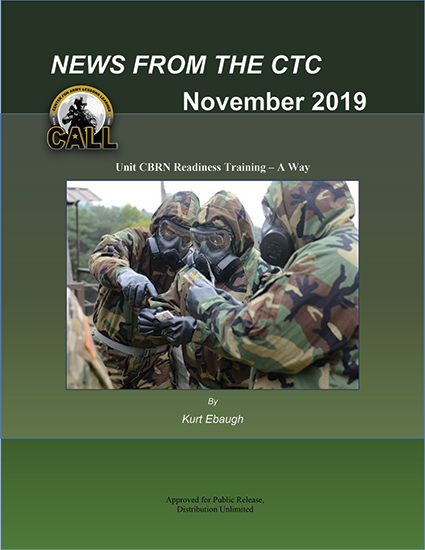 NFTCTC - Unit CBRN Readiness Training - A Way
NFTCTC - Unit CBRN Readiness Training - A Way
There appears to be a dilemma on how to manage finite training opportunities and best conduct small-unit level chemical, biological, radiological, and nuclear (CBRN) tasks during home-station training to ensure units are effectively trained in mission oriented protective posture gear exchange, selective unmasking, and decontamination. Much of what will be asked of a Soldier against a near-peer threat in a contaminated battlefield will require fighting "dirty" for extended periods of time. Maneuver formations at the brigade level and lower will need to conduct hasty decontamination as far forward as possible in order to continue to sustain operational tempo. Mission success requires proficiency in these basic CBRN skills. This article is designed to describe a training approach that will generate the necessary basic CRBN individual and collective skills proficiency.
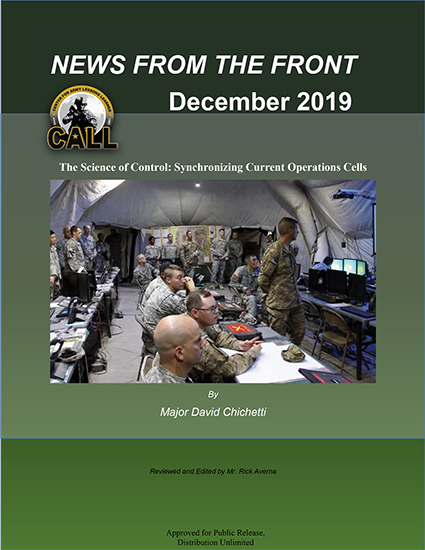 NFTF - The Science of Control: Synchronizing Current Operations Cells
NFTF - The Science of Control: Synchronizing Current Operations Cells
The current operations (CUOPS) cell is essential to translating plans to orders and eventually to the execution of combat operations. The CUOPS integrating cell is critical in synchronizing operations, sustaining the common operational picture and mitigating risk to the mission. In the operations process, the CUOPS cell is the commander's most prominent tool to understand, describe, visualize, and direct operations. This article discusses the processes and techniques that optimize CUOPS cells’ control over forces. In addition to command and control systems, this article intertwines techniques to manage CUOPS personnel and enhance the rapid decision-making and synchronization process. The operations process of planning, preparing, executing, and assessing forms the outline of this article. The intent is to bridge doctrinal understanding with the practical application of managing a CUOPS cell.
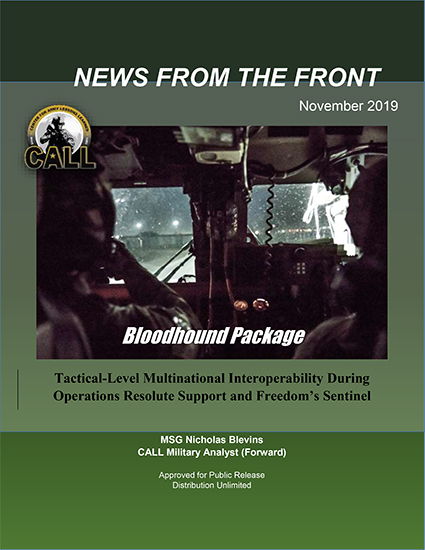 NFTF - Tactical-Level Multinational Interoperability During Operations Resolute Support and Freedom's Sentinel
NFTF - Tactical-Level Multinational Interoperability During Operations Resolute Support and Freedom's Sentinel
A Center for Army Lessons Learned (CALL) military analyst (forward) embedded with the 264th Engineer Clearance Company (Spartans) and developed observations base on their operations in support of Operations Resolute Support and Freedom's Sentinel. The Spartans provided CALL with these insights while conducting combat patrols on area denial and route clearance, as well as experiencing a look at a "Bloodhound" package.
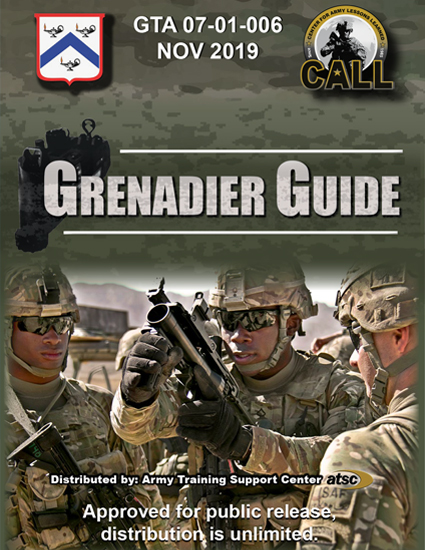 GTA 07-01-006 - Grenadier Guide
GTA 07-01-006 - Grenadier Guide
This graphic training aid (GTA) provides technical information about combat techniques for the M320 grenade. Which gives designated grenadiers basic information to successfully integrate the M320 into their combat operations. Refer to Training Manual (TM) 3-22.31.
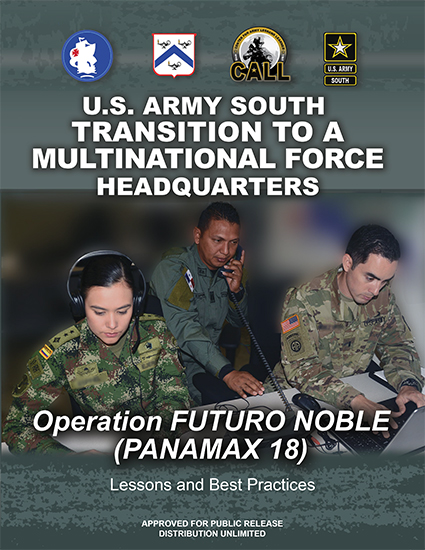 20-02 - U.S. Army South Transition to a Multinational Force Headquarters (PANAMAX 18)
20-02 - U.S. Army South Transition to a Multinational Force Headquarters (PANAMAX 18)
Operation FUTURO NOBLE (PANAMAX 2018) is a U.S. Southern Command-sponsored, combatant commander exercise. The exercise scenario focused on a multinational response under a United Nations Security Council resolution to counter security threats to the Panama Canal and surrounding region. This book also addresses the transition of U.S. Army South to a combined joint task force headquarters named Multinational Force South.
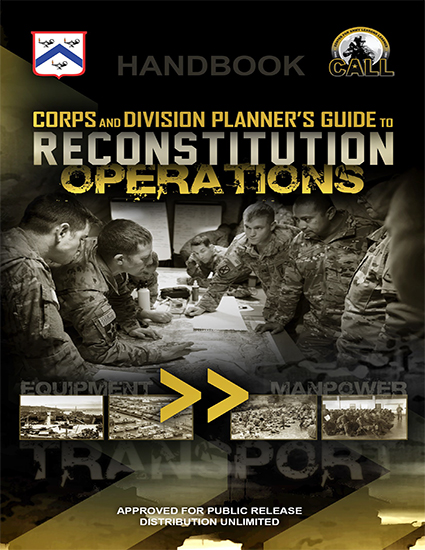 20-01 - Corps and Division Planner’s Guide to Reconstitution Operations
20-01 - Corps and Division Planner’s Guide to Reconstitution Operations
This handbook serves as an aid to corps- and division-level staffs as they plan and prepare to conduct reconstitution operations. It provides insights into challenges the staff will face when planning reconstitution operations, outlines responsibilities of key individuals throughout the process, and finally provides planning considerations to facilitate an all-encompassing reconstitution plan.
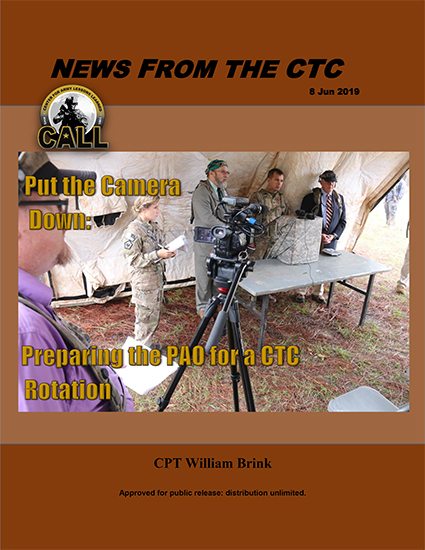 NFTCTC - Put the Camera Down: Preparing the Public Affairs Officer for a JRTC Rotation
NFTCTC - Put the Camera Down: Preparing the Public Affairs Officer for a JRTC Rotation
This article is intended for all units conducting home station training to prepare themselves for a combat training center (CTC) rotation. The author discusses a recurring trend at the Joint Readiness Training Center (JRTC) and the challenges that the Public Affairs Officer (PAO) face. Fig 1. Shows the results of misplaced PAO home station training. A Soldier during a recent JRTC rotation covers the camera lens of a credentialed, American Media on the Battlefield (MoB) Role-player. Public affairs officers and sections at the Brigade Combat Team (BCT) level are struggling with media interaction training due to its removal from AR 350-1 training requirements, reduced section size, and command emphasis on command information content acquisition instead of communication planning and training.
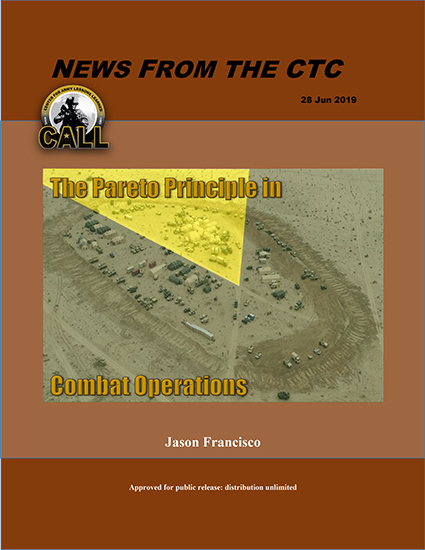 NFTCTC - The Pareto Principle in Combat Operations
NFTCTC - The Pareto Principle in Combat Operations
The Pareto principle simply stated is that 80% of the desired results are derived from 20% of the input (also known as the 80/20 rule in which roughly 80% of the effects come from 20% of the causes). This principle has been proven in business and finance, in addition to military implications. This article focuses on key components that produce the greatest impact across the brigade combat team (BCT). The Army's focus on decisive action is suffering from a decade of counterinsurgency operations, necessitating a much more rapid evolution in preparing for a near-peer threat across multiple domains. Inability to adapt the military's current training to fit the current threat increases the probability of a deadly learning curve in the next war or conflict. According to the Pareto principle, marked improvement is achieved through increasing focus on the best 20% of processes related to combat training; specifically, reconnaissance, command and control nodes, the common operational picture, and sustainment. Each of these focal points tie in and support each other in a highly complex battlefield.

